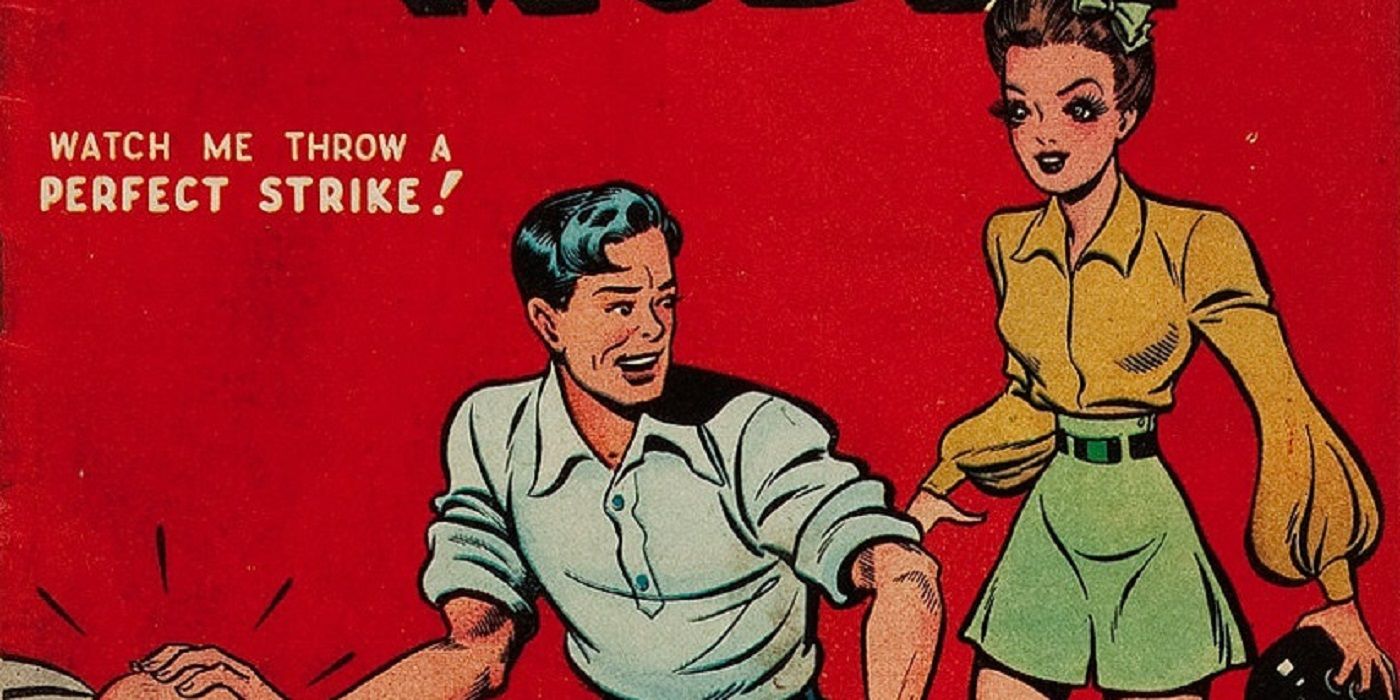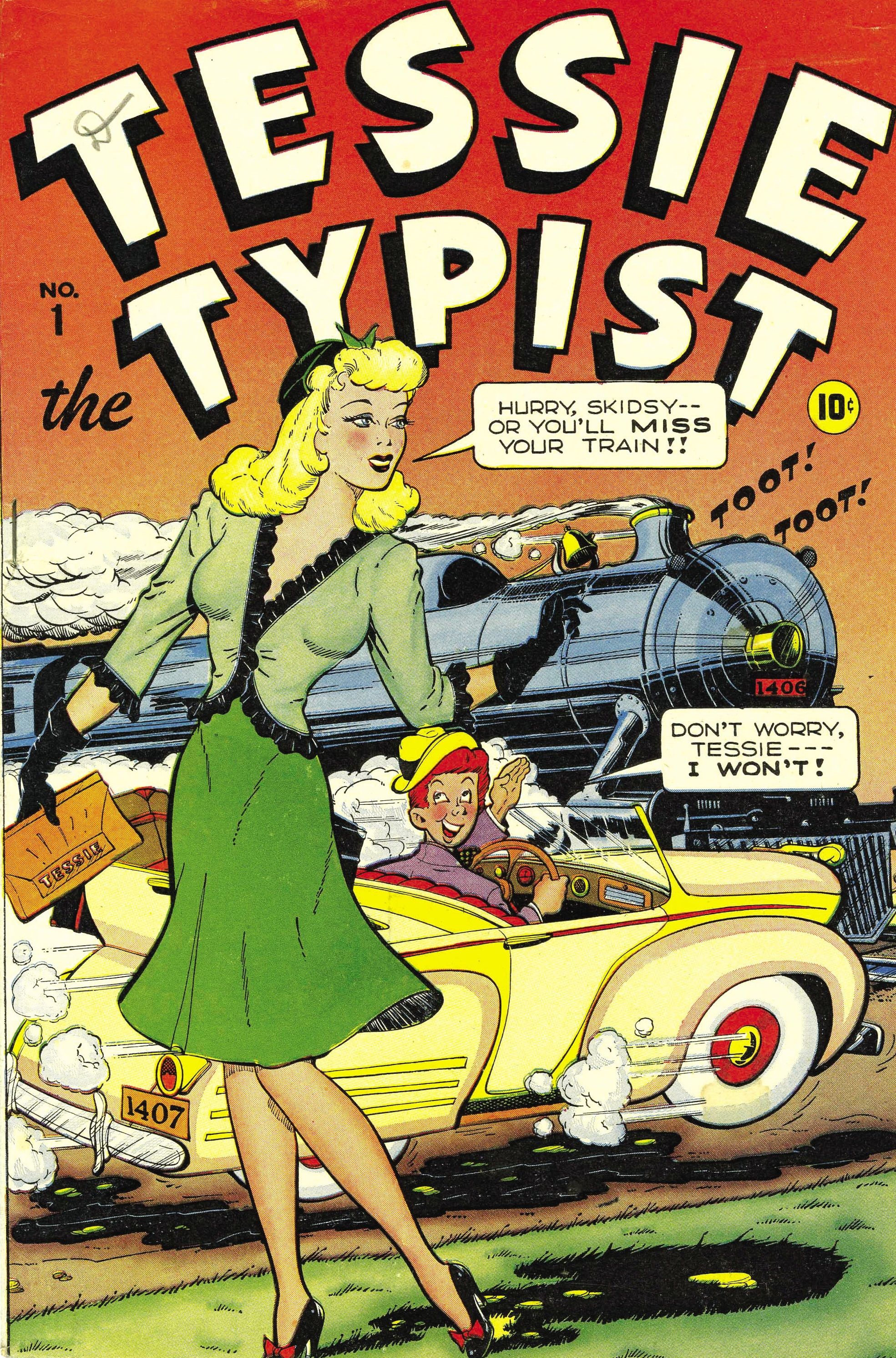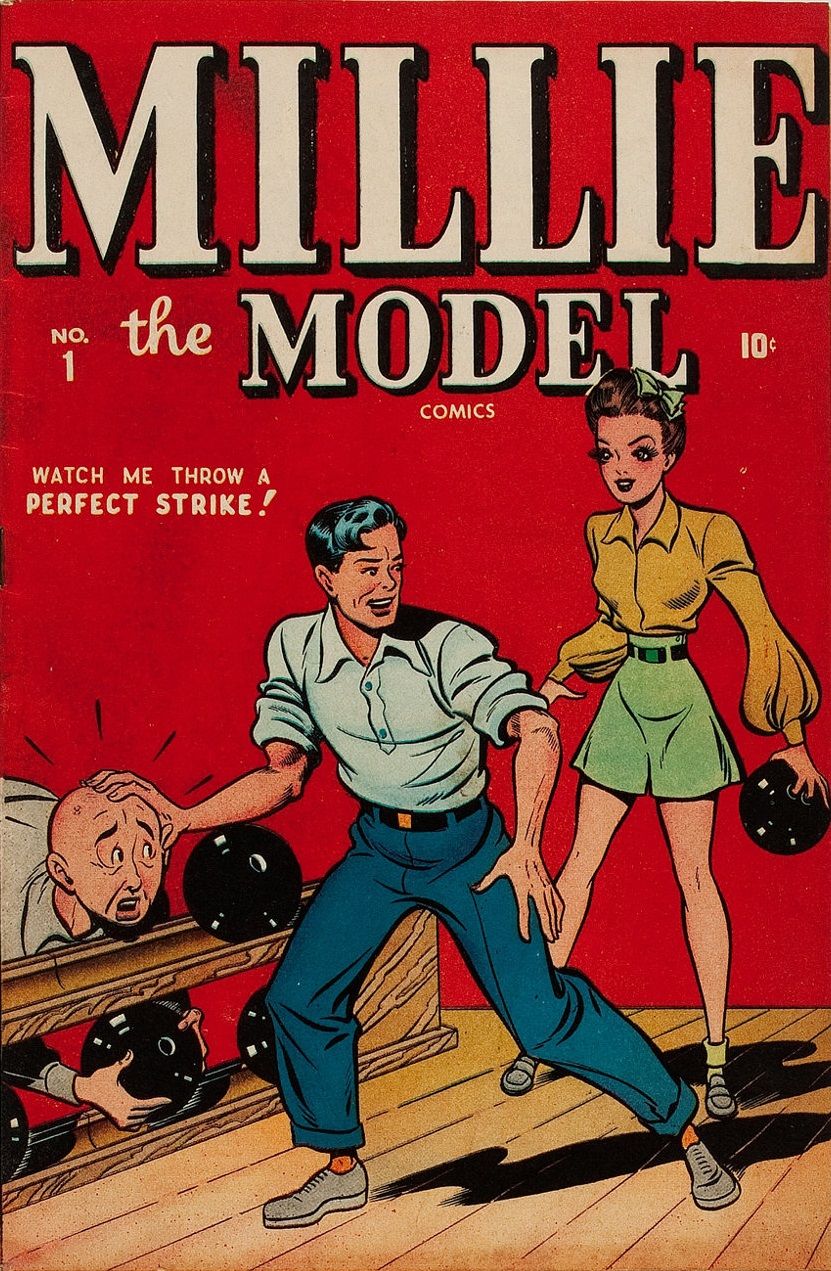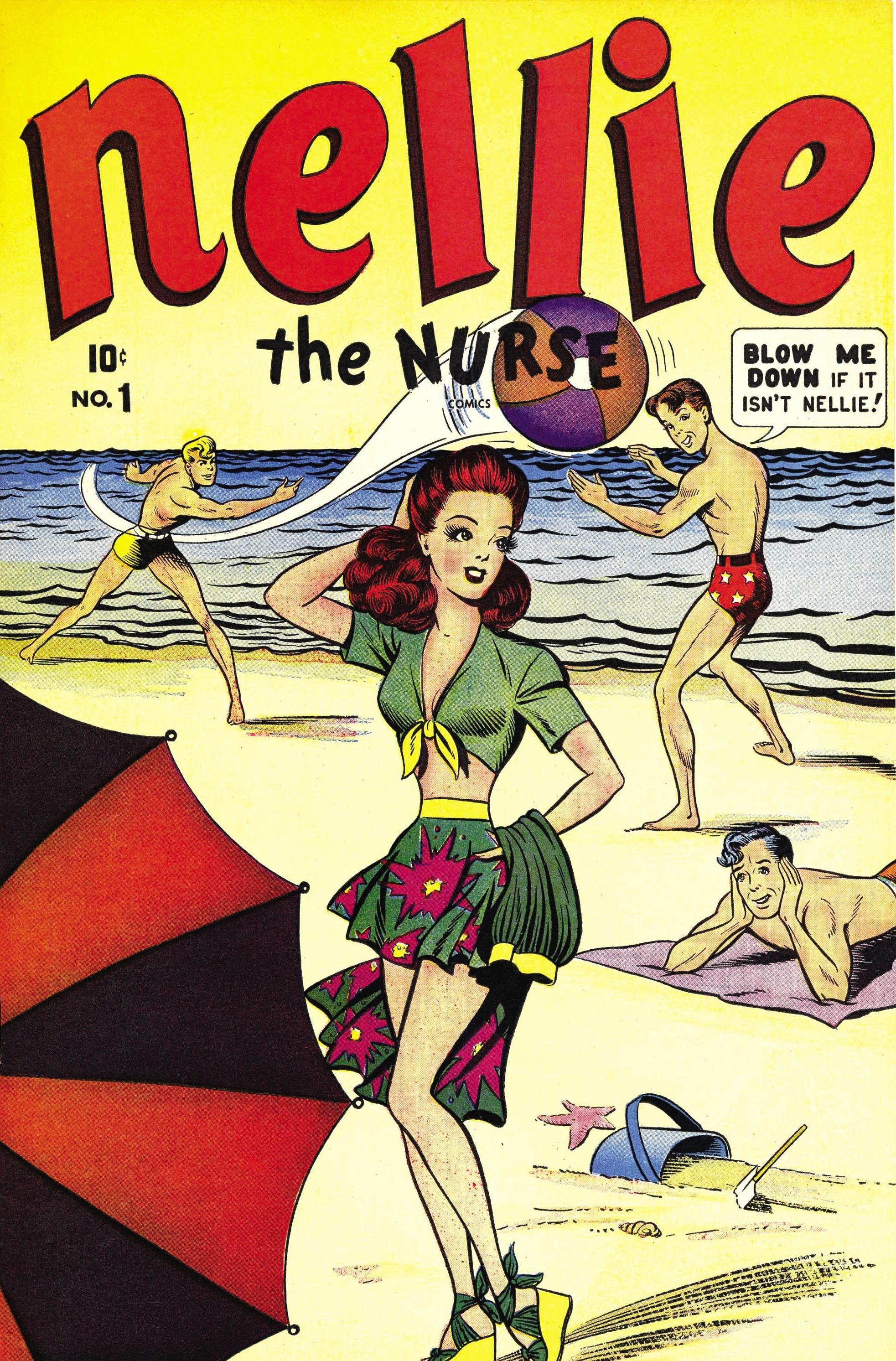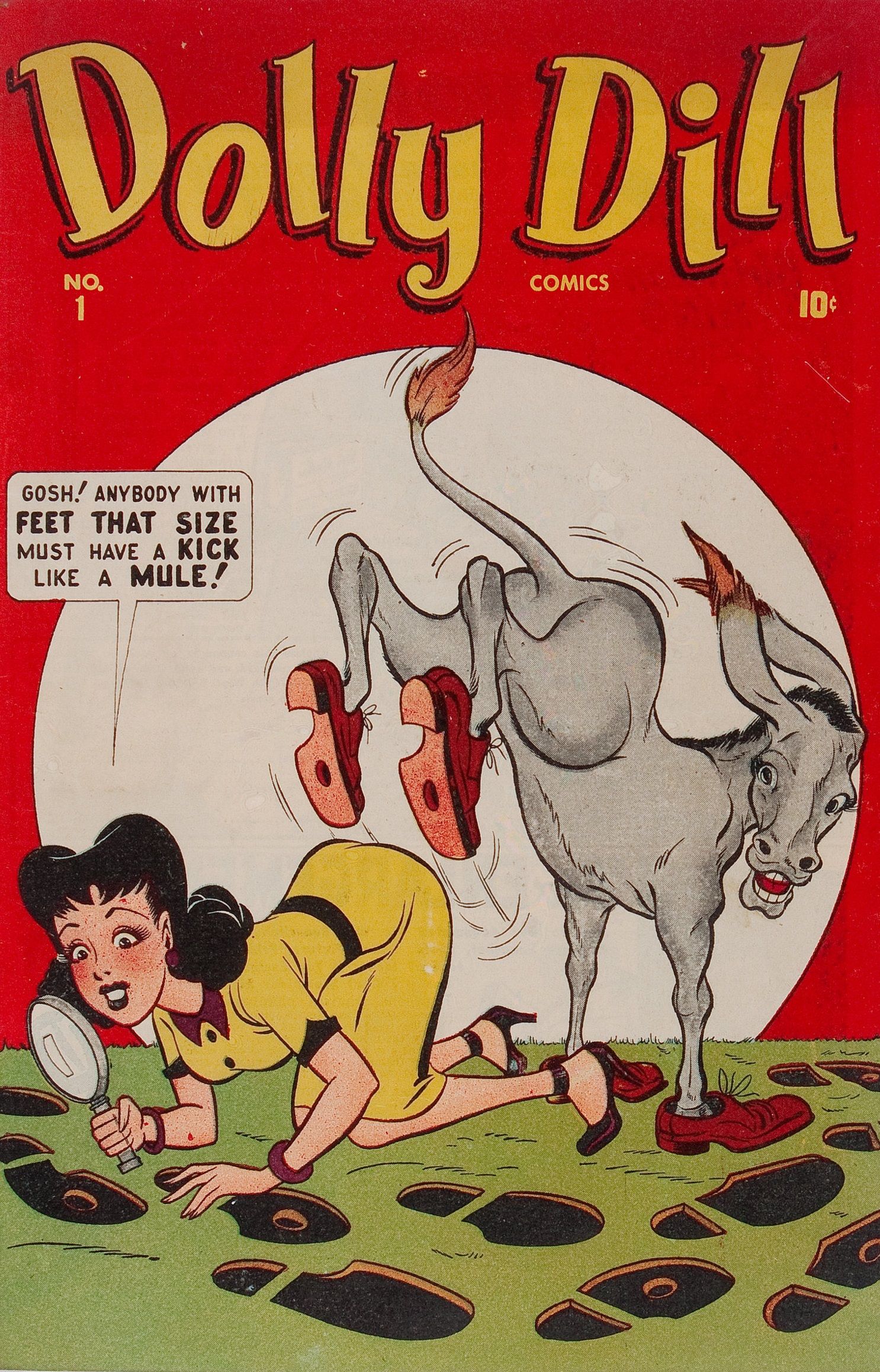This is "Look Back," a feature that I plan to do for at least all of 2020 and possibly beyond that (and possibly forget about in a week, who knows?). The concept is that every week (I'll probably be skipping the four fifth weeks in the year, but maybe not) of a month, I will spotlight a single issue of a comic book that came out in the past and talk about that issue (often in terms of a larger scale, like the series overall, etc.). Each week will be a look at a comic book from a different year that came out the same month X amount of years ago. The first week of the month looks at a book that came out this month ten years ago. The second week looks at a book that came out this month 25 years ago. The third week looks at a book that came out this month 50 years ago. The fourth week looks at a book that came out this month 75 years ago. The occasional fifth week looks at books from 20/30/40/60/70/80 years ago.
Today, we look back at August 1945 for the debut of Millie the Model and the surprising line of comic books that she was part of at Marvel!
Something that has been a tried and true fact of nature ever since the very first comic book was published is that comic book companies will always steal from each other. That's just the nature of the business. Whatever idea works for company X will be stolen by Company Y. It's just logical, really, as if an idea works for Company X, why wouldn't it work for Company Y?
However, nowadays, while companies are obviously influenced by each other still (how many zombie comic books launched after Walking Dead hit it big?), it is a lot slower to get a comic book approved than it was back in the Golden Age, where companies were playing fast and loose. There would be times where a company would just get a hold of some extra paper (back when paper was rationed) and they would say, "Heck, we might as well make a comic book" and they would make a comic book.
As a result, trends were obviously key back then and if someone hit upon something, everyone would quickly try to copy it. A notable example was when Archie Andrews became a hit for MLJ (now Archie), then Timely Comics (now Marvel) launched Patsy Walker, a female version for Archie (I covered it in a Look Back last year).
Along the line of trends, when superhero books were hot, Timely put out lots of superhero books. When westerns were hot, they did westerns. Well, in the 1940s, one of the most popular genres was humor comic books. It was nice escapism for the troops overseas (who bought a lot of comic books). Vincent Fago was Marvel's main humor guy (he briefly was even Editor-in-Chief while Stan Lee was in the military during World War II).
One of the comic books that Fago created was Joker Comics, a humor anthology. One of the features in the series was Tessie the Typist, who debuted in 1942's Joker Comics #2. This was a time when women were forced into the workforce due to the war and Tessie the Typist was a wacky lady who worked as, well, you know, a typist. Eventually, she received her own ongoing series in 1944...
That worked out well enough, so Timely had Ruth Atkinson, one of the greatest female comic book artists of the 1940s, and who had co-created Patsy Walker in Miss America Magazine, create a new character to go with Tessie the Typist. And so Millie the Model was born.
Atkinson only did the first issue, and then Ken Bald and other artists took over with the next issue. Millie was an up and coming model trying to get her first big break. Years later, Stan Lee and Dan DeCarlo had an acclaimed run on the series and Millie actually lasted until well into the Marvel Age of Comics (Millie, Patsy Walker and Kit Colt, Outlaw, were the only series that lasted from the Golden Age to the Silver Age for Marvel).
However, interestingly enough, when Millie launched in August 1945, it was part of a LINE of female-centric comics, all in the mold of Tessie the Typist. There was also Nellie the Nurse...
In addition, there was Dolly Dill, who was more of a traditional humor character than the more sitcom-y adventures of the other working women. Of course, August 1945 was right after the end of World War II in the European theater (and soon the war in Japan would be over, too) and so "working women" was probably not as "hot" of a trend anymore and so the titles mostly ended, with Tessie the Typist being revamped as a Little Lulu-style comic book series called Tiny Tessie.
It is interesting to see how Marvel, decades ago, was trying to actually do a line of comics designed for female readers. People really don't get just how big the female market was for comic books back in the Golden Age, where there was a fairly even distribution of comic book readers between boys and girls.
If you folks have any suggestions for September (or any other later months) 2010, 1995, 1970 and 1945 comic books for me to spotlight, drop me a line at brianc@cbr.com! Here is the guide, though, for the cover dates of books so that you can make suggestions for books that actually came out in the correct month. Generally speaking, the traditional amount of time between the cover date and the release date of a comic book throughout most of comic history has been two months (it was three months at times, but not during the times we're discussing here). So the comic books will have a cover date that is two months ahead of the actual release date (so October for a book that came out in August). Obviously, it is easier to tell when a book from 10 years ago was released, since there was internet coverage of books back then.

